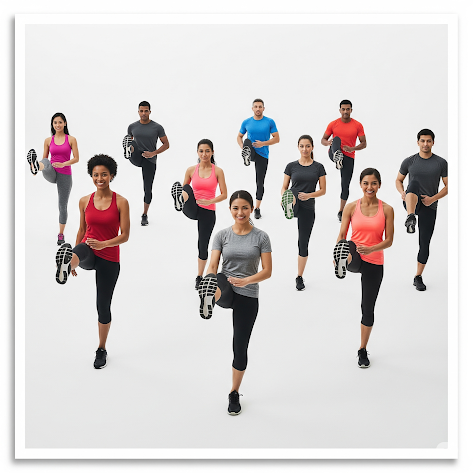Table of Contents
1. Why is Good Leg Circulation Important?
Good blood circulation in the legs is essential for overall health. It ensures that oxygen and nutrients are efficiently delivered to the tissues, while waste products are removed. Poor circulation can lead to various symptoms like swelling, pain, fatigue, and even more serious health issues over time.
2. Lifestyle Habits for Better Leg Circulation
Adopting certain lifestyle habits can significantly improve blood circulation in your legs:
- Stay Active: Regular physical activity is one of the most effective ways to boost circulation. Aim for at least 30 minutes of moderate-intensity exercise most days of the week. Even low-impact exercises like walking are beneficial. (CVMUS)
- Elevate Your Legs: Elevating your legs above your heart for about 15-20 minutes a few times a day can help improve blood flow back to the heart and reduce swelling. (CVMUS)
- Wear Compression Stockings: Compression stockings can help to gently squeeze your legs, promoting better blood flow and reducing swelling. (Healthline)
- Quit Smoking: Smoking damages blood vessels and impairs circulation. Quitting smoking can lead to significant improvements in blood flow.
- Stay Hydrated: Dehydration can make your blood thicker, making it harder for your heart to pump effectively. Drink plenty of water throughout the day.
- Maintain a Healthy Weight: Excess weight can put extra pressure on your blood vessels and make circulation problems worse. Losing weight can improve circulation. (NYU Langone Health)
- Avoid Prolonged Sitting or Standing: If your job requires you to sit or stand for long periods, take frequent breaks to move around. Avoid crossing your legs while sitting. (CVMUS)
- Manage Stress: High stress levels can negatively impact circulation. Practice stress-reducing activities like yoga or meditation.
3. Simple Exercises to Enhance Leg Circulation
Incorporating these simple exercises into your daily routine can help improve circulation in your legs:
- Ankle Pumps: While sitting or lying down, flex your feet up and down at the ankle joint. Repeat several times. (NYU Langone Health)
- Calf Raises: Stand with your feet flat on the floor. Slowly rise up onto your toes, hold for a moment, and then lower back down. Repeat several times. (Healthline)
- Leg Raises: Lie on your back with your legs straight. Lift one leg up towards the ceiling, hold for a few seconds, and then slowly lower it back down. Repeat with the other leg. (Healthline)
- Walking: A brisk walk for at least 20-30 minutes daily can significantly improve circulation.
4. When to See a Doctor
If you experience persistent symptoms of poor circulation in your legs, such as severe pain, swelling, numbness, or skin discoloration, it is important to consult a doctor to rule out any underlying medical conditions.
5. Conclusion
Improving blood circulation in your legs is achievable through simple lifestyle changes and regular exercise. By adopting these habits, you can enhance your overall health and well-being.




Comments
Post a Comment